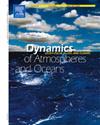海表温度和海洋热浪变化在相互联系的盆地:黑-马尔马拉-爱琴海
IF 2
4区 地球科学
Q2 GEOCHEMISTRY & GEOPHYSICS
引用次数: 0
摘要
海表温度(SST)是影响海洋生态系统的重要参数,近几十年来,由于气候变化,海表温度急剧上升。这种变暖导致海洋热浪(MHW)事件的频率和强度增加,极端海温的持续时间延长,这具有严重的生态后果。利用1982 - 2021年的卫星海温日资料,研究了连通的黑海、马尔马拉海和爱琴海的海温和海温的时空变化特征。我们的研究结果表明,所有三个盆地的海温都显著增加,其中黑海的变暖最为明显,其次是马尔马拉海。海温趋势在黑海东部达到0.8 °C/ 10年,在爱琴海达到0.3 °C/ 10年。2000年代以来,海温升温加速,长期空间平均趋势由0.57 °C/ 10年增加到0.68 °C/ 10年。这种变暖趋势推动了MHW频率和持续时间的急剧增加,特别是在过去十年中。马尔马拉海的海温频率变化趋势最大,增加了1.56次/ 10年,2000年代以后进一步加剧。除了长期趋势外,强强风还表现出年际变化,这与东大西洋(EA)和东大西洋/俄罗斯西部(EAWR)气候指数相关。鉴于MHW事件的频率和持续时间不断增加,我们还研究了2007年和2021年马尔马拉海的粘液暴发。我们的分析表明,黏液的大量繁殖与MHW事件强烈和持续的年份相对应,强调MHW是黏液形成的潜在驱动因素。本文章由计算机程序翻译,如有差异,请以英文原文为准。
Sea surface temperature and marine heatwave variability in interconnected basins: The Black-Marmara-Aegean Seas
Sea surface temperature (SST) is a crucial parameter affecting marine ecosystems and has risen dramatically in recent decades due to climate change. This warming has led to an increase in the frequency and intensity of marine heatwave (MHW) events, prolonged periods of extreme SSTs, which have severe ecological consequences. This study investigates the spatiotemporal variability of SST and MHW characteristics across the interconnected Black, Marmara, and Aegean Seas using satellite-derived daily SST data from 1982 to 2021. Our findings indicate a significant SST increase across all three basins, with the most pronounced warming observed in the Black Sea, followed by the Marmara Sea. SST trends reach 0.8 °C/decade in the eastern Black Sea and 0.3 °C/decade in the Aegean Sea. Since the 2000s, SST warming has accelerated, with the long-term spatial mean trend of 0.57 °C/decade increasing to 0.68 °C/decade. This warming trend has driven a sharp increase in MHW frequency and duration, particularly in the last decade. The highest trend in MHW frequency is observed in the Marmara Sea, with an increase of 1.56 events/decade which further intensified after the 2000s. Beyond long-term trends, MHWs exhibit interannual variability, which correlates with the Eastern Atlantic (EA) and Eastern Atlantic/Western Russia (EAWR) climate indices. Given the rising frequency and duration of MHW events, we also examined mucilage outbreaks in the Marmara Sea during 2007 and 2021. Our analysis suggests that mucilage blooms correspond to years with intense and prolonged MHW events, highlighting MHWs as a potential driver of mucilage formation.
求助全文
通过发布文献求助,成功后即可免费获取论文全文。
去求助
来源期刊

Dynamics of Atmospheres and Oceans
地学-地球化学与地球物理
CiteScore
3.10
自引率
5.90%
发文量
43
审稿时长
>12 weeks
期刊介绍:
Dynamics of Atmospheres and Oceans is an international journal for research related to the dynamical and physical processes governing atmospheres, oceans and climate.
Authors are invited to submit articles, short contributions or scholarly reviews in the following areas:
•Dynamic meteorology
•Physical oceanography
•Geophysical fluid dynamics
•Climate variability and climate change
•Atmosphere-ocean-biosphere-cryosphere interactions
•Prediction and predictability
•Scale interactions
Papers of theoretical, computational, experimental and observational investigations are invited, particularly those that explore the fundamental nature - or bring together the interdisciplinary and multidisciplinary aspects - of dynamical and physical processes at all scales. Papers that explore air-sea interactions and the coupling between atmospheres, oceans, and other components of the climate system are particularly welcome.
 求助内容:
求助内容: 应助结果提醒方式:
应助结果提醒方式:


